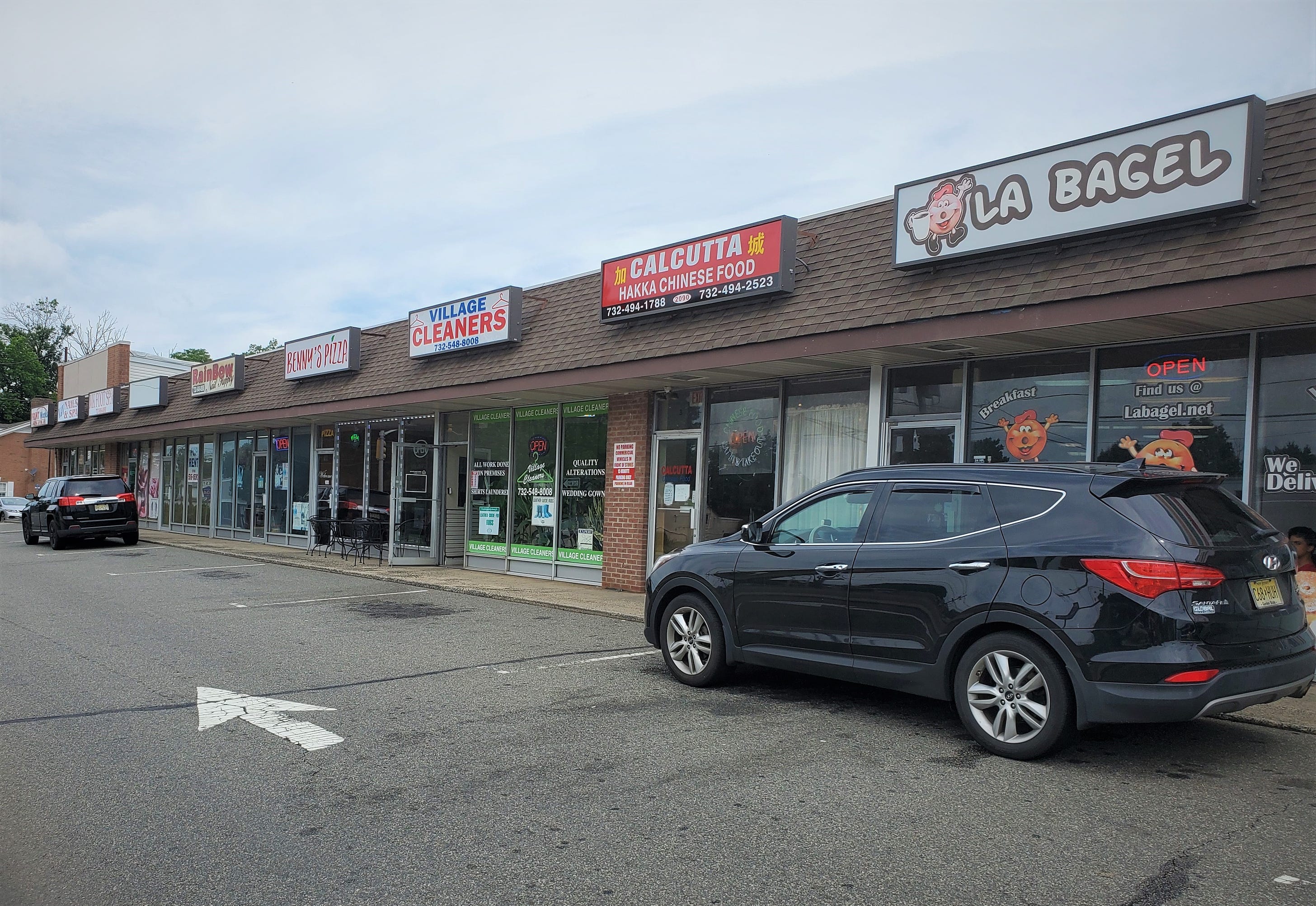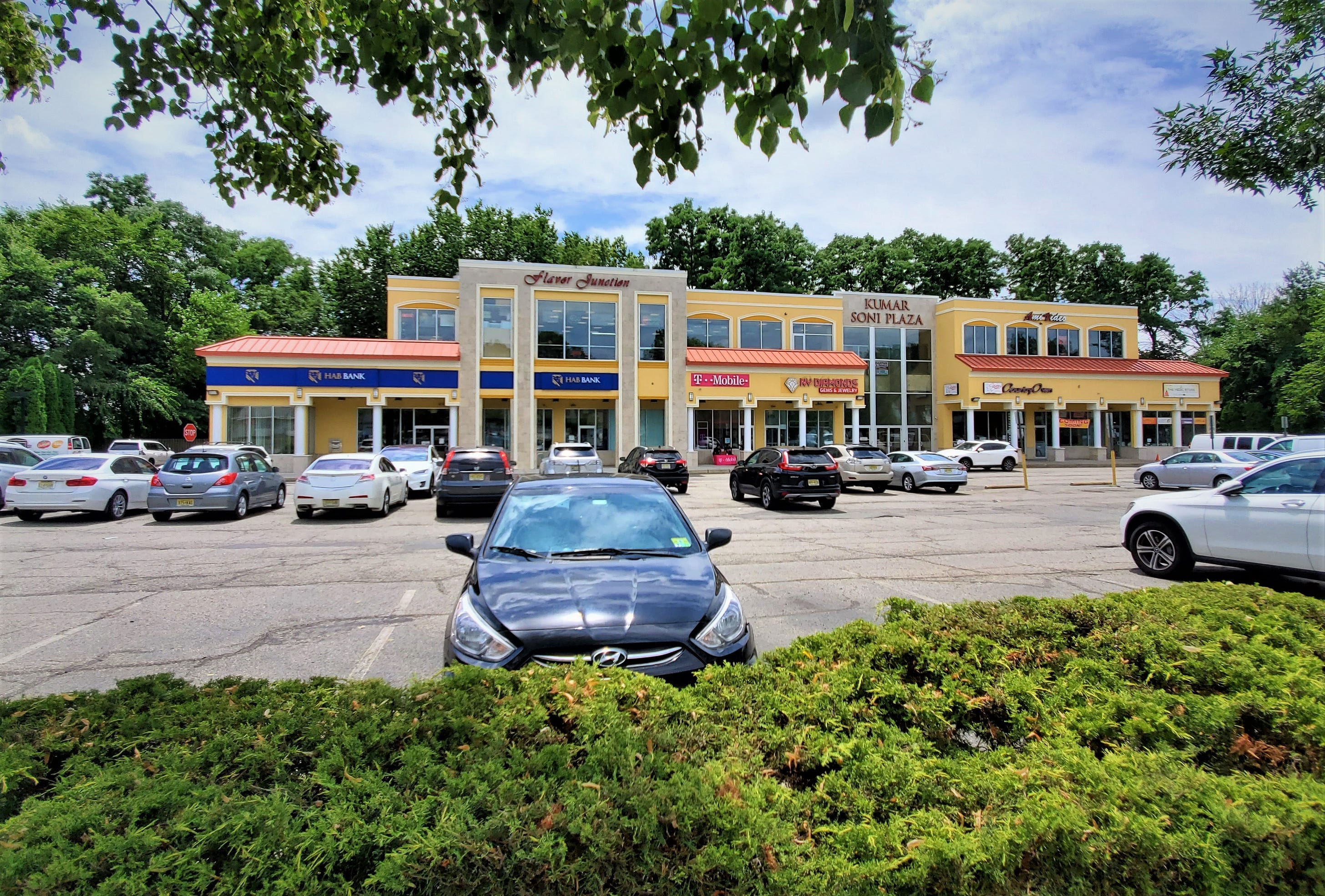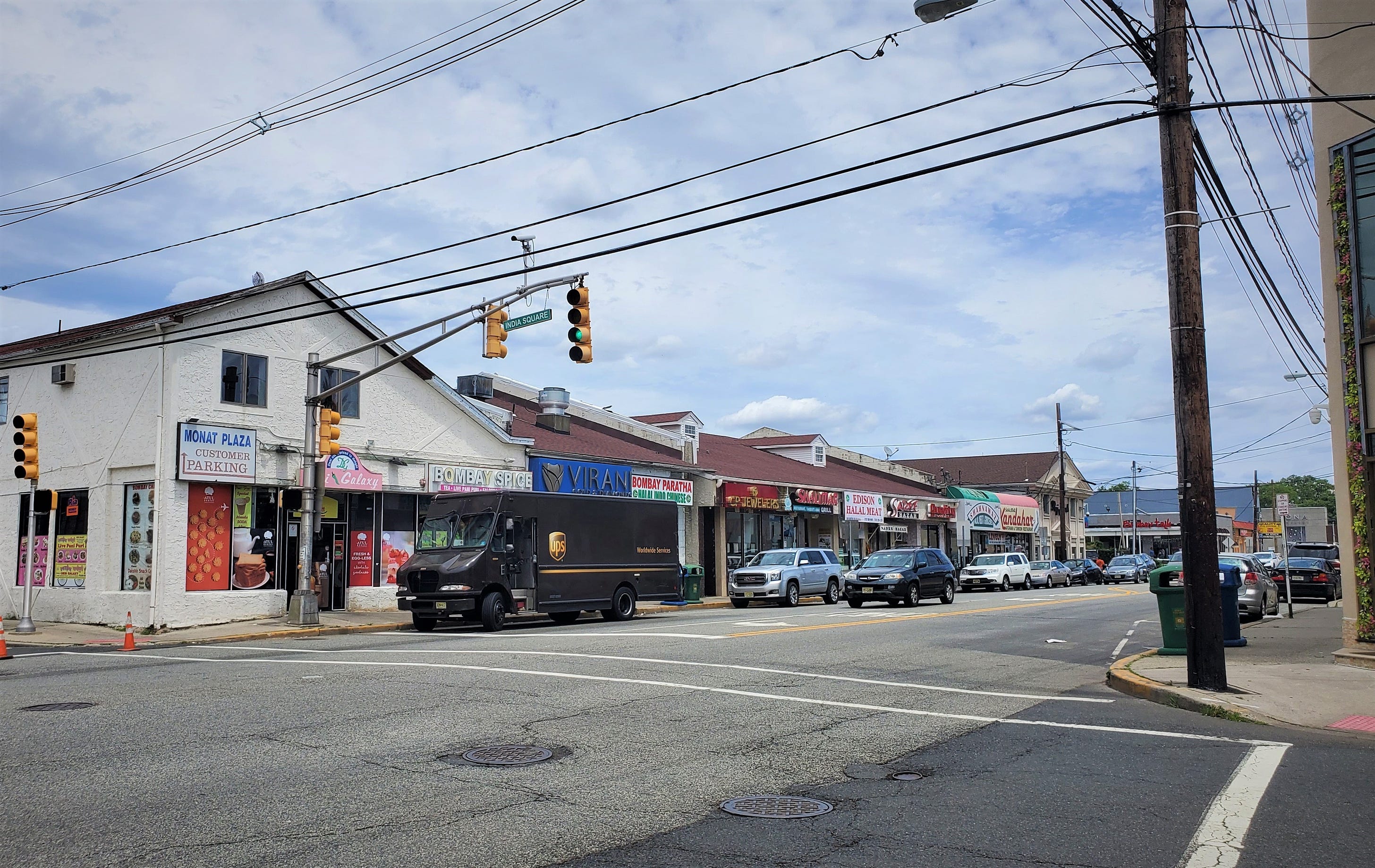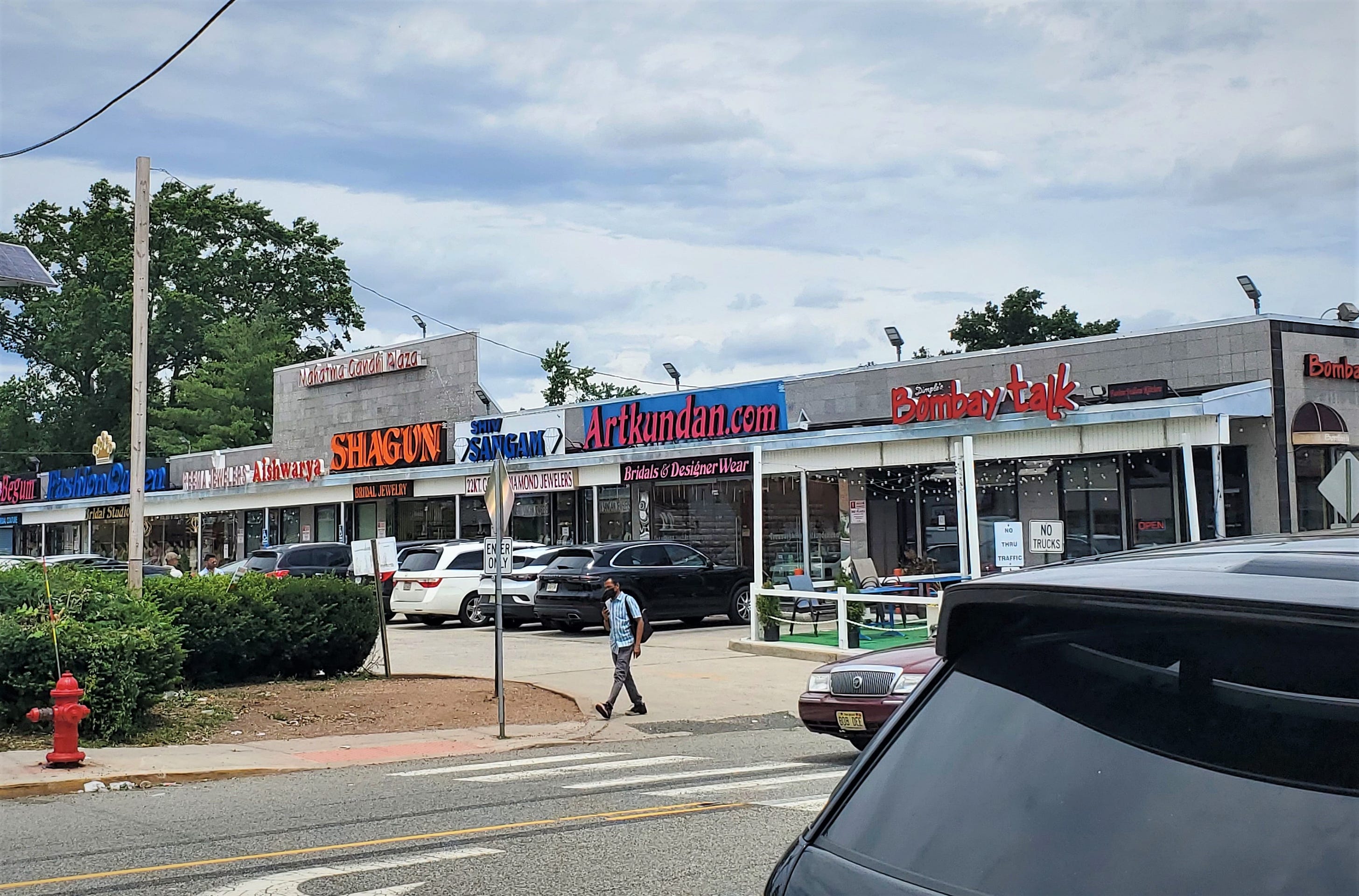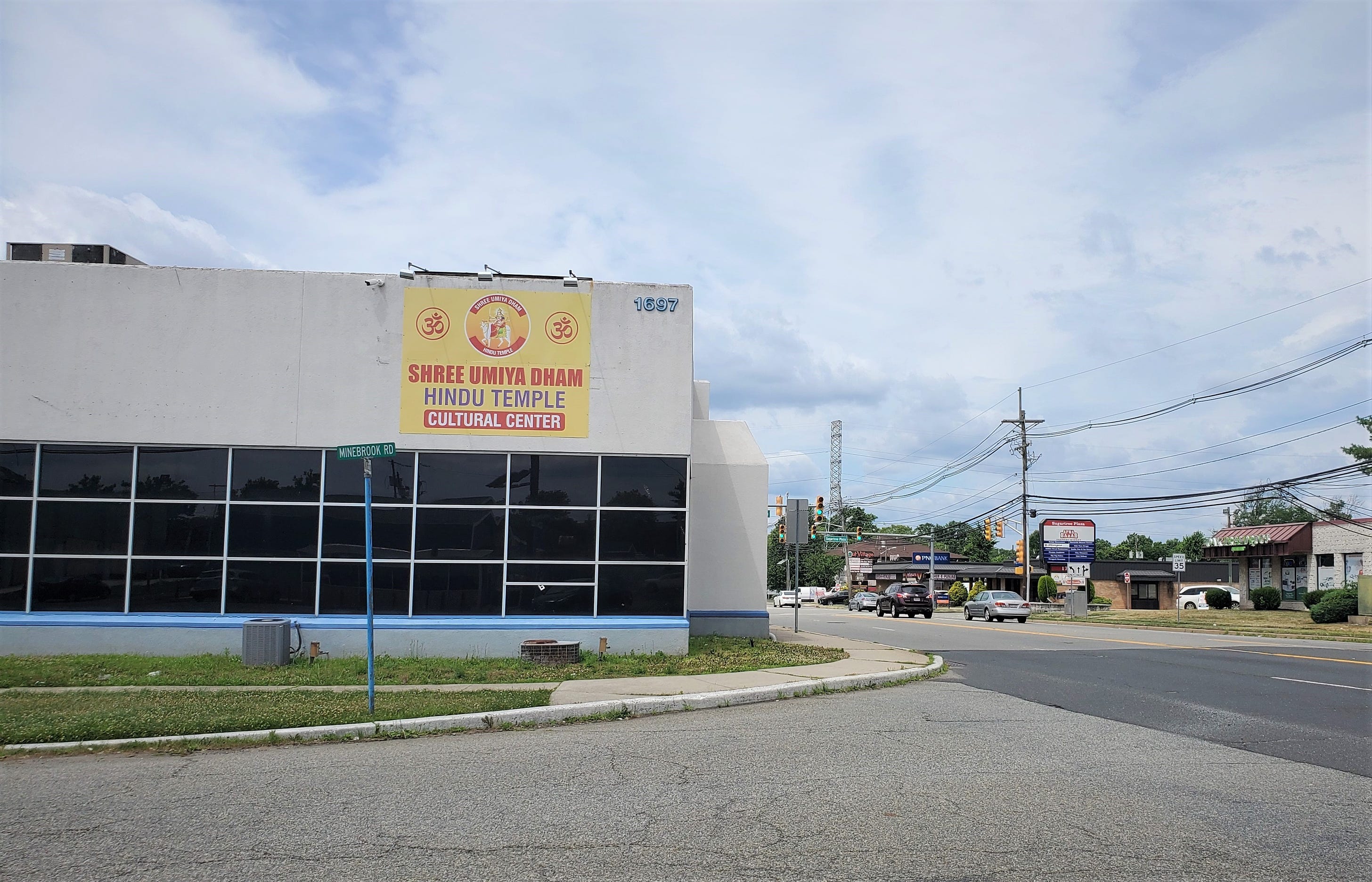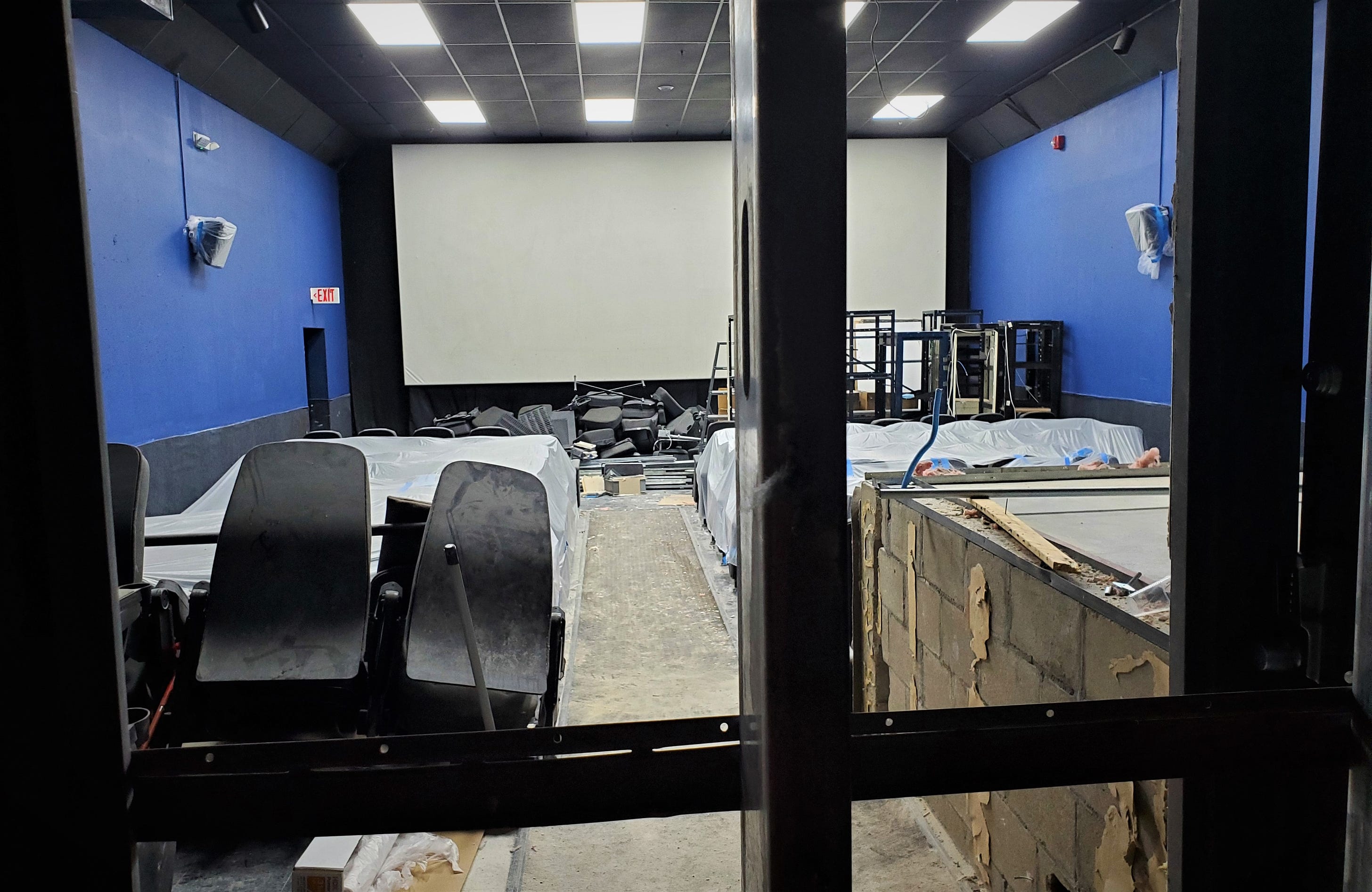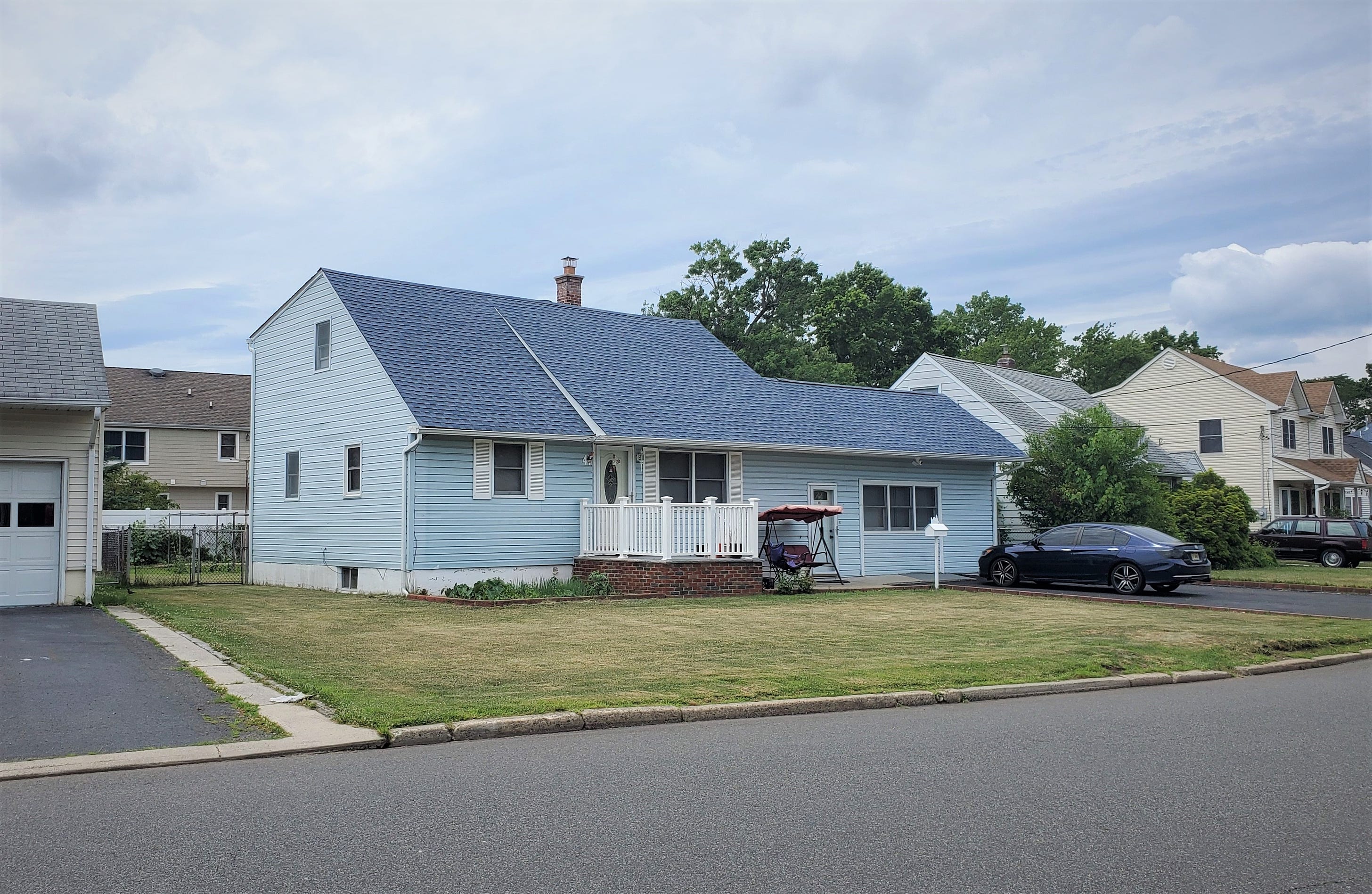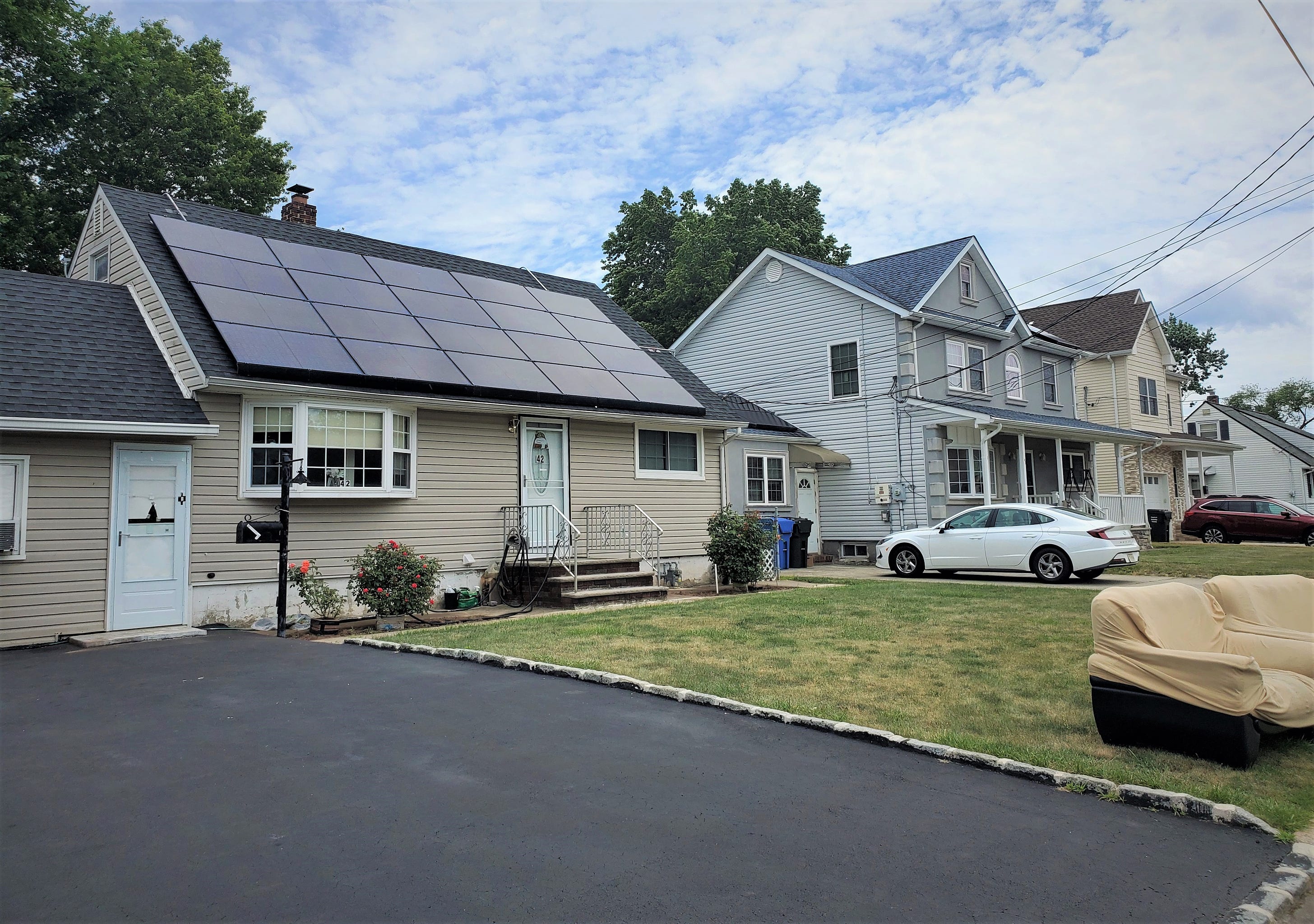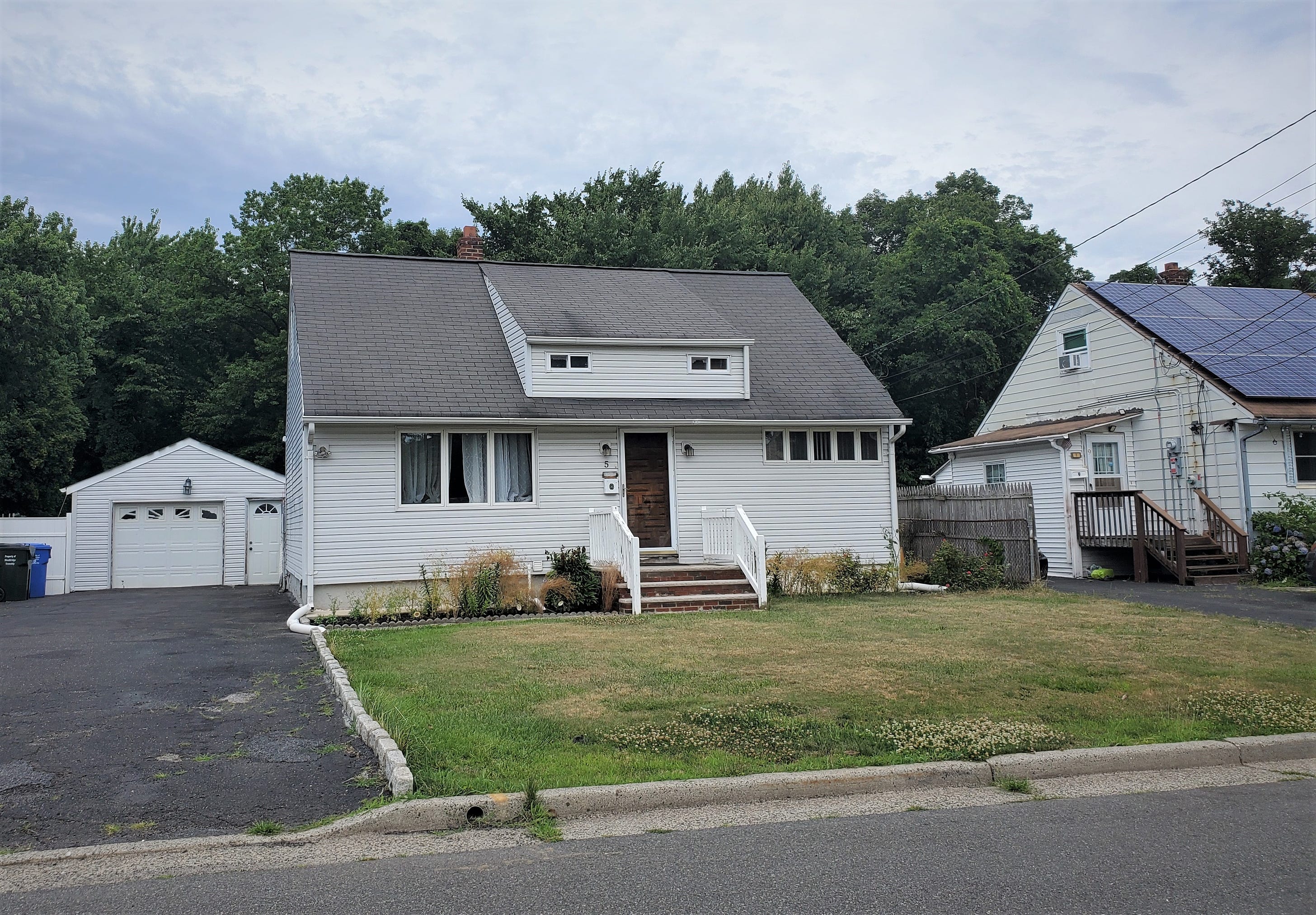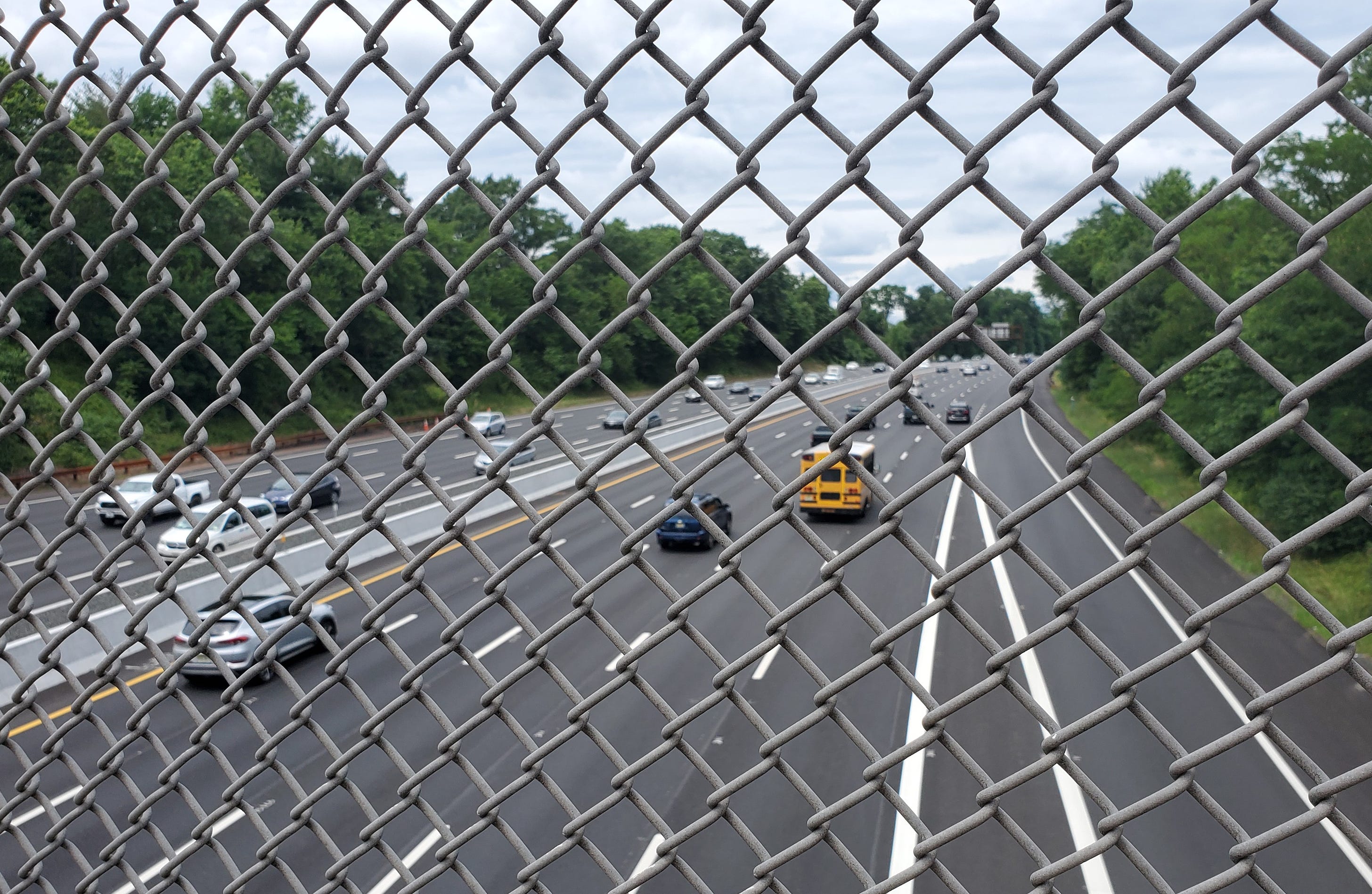The Deleted Scenes - New Jersey's Little India
I recently visited, and wrote about, Edison/Iselin New Jersey’s Oak Tree Road corridor, also known as Little India. Some sources say it’s the largest concentration of Indian and South Asian businesses in the United States. And it’s all concentrated in what just 30 years ago was a worn out corridor of postwar suburban sprawl. This is something I’ve noticed before: the seeming disconnect in places like this between the vibrancy, energy, and local scale of the business on the one hand, and the land use on the other. There’s something unexpected and incongruous about a one- or two-mile stretch of disconnected properties meshing into something that feels like, and functions as, an actual neighborhood. Some people don’t like it; they feel like one community has “taken over” the whole space. Other people like it but see it as somehow an immigrant thing; “They can do it because they’re different. We could never do this.” Both of those views are wrong in my opinion. I think we should welcome immigrants, and the entrepreneurial spirit many of them bring. It enriches our country, and in fact, it’s what saved the Oak Tree Road corridor from dereliction and abandonment. Immigrants didn’t “take it over”; they took something that increasingly nobody else wanted, they made it their own, and in turn it’s now a vibrant place everybody can visit and enjoy. But it’s also false, and kind of patronizing, to think that only immigrants can create places like this, or do business in this small-scale, fine-grained way. I bet you want to see what Oak Tree Road looks like. But first let me draw out this point. First from my recent piece in Vox on the transformation of the suburbs:
And then from the Oak Tree Road piece, which I wrote for Strong Towns:
Many of the businesses on Oak Tree Road are small, most are independent and locally owned, and many are financed by businesspeople within the community—in large part because immigrants have a harder time getting commercial loans. This is something typical of immigrant communities, but it isn’t something unique to immigrants. We could do it too, and we once did. More:
That’s where I come back to that idea of the land use and the commerce not matching up. These folks—or the folks who populate Eden Center in Northern Virginia, or who turned an oversized big-box parking lot into an informal social and commercial space in Montgomery County, Maryland—are applying something like America’s old Main Street business model to a suburban, car-dependent landscape. And hey, it kind of works. It’s something a lot of people—including some urbanist critics of strip malls and stroads—still don’t really get. If you think all I’m talking about here is restaurants, there are also lots of different kinds of stores, as well as cultural amenities and festivals, which don’t usually happen in suburban settings. Here are a bunch of photos. As you can see, this is pretty typical postwar sprawl, most of it dating to the period between the 1950s and 1970s. It isn’t much to look at—but when we do business differently, the feel of the place can elevate its form. Here’s some of the retail, mostly small strip malls and small detached buildings. There are only one or two larger shopping plazas of the sort that were built in the last few decades. There are at least five grocery stores along here, from small places to a full-sized modern supermarket to a few mid-sized neighborhood supermarkets. Here’s a Hindu temple in an old office building, and an old movie theater being, as far as I could tell, updated and converted into an Indian-focused cinema. And here are the typical houses. There are some garden apartments and small apartment buildings too. Like the businesses, the housing is mostly older, pretty simple stuff. Most of these are Levitt-style postwar capes, more or less designed to be expanded over time. It’s a neat little remnant of incremental development, before houses were entirely viewed as products built all at once with no expectation of treating them as a first stage or a building block. This one has altered the roofline and turned the garage into a room with its own door, likely to accommodate an extended family member. It suggests that living space is more important than car storage to the people who live here now. Same here: And this one, a simpler model without an attached garage, is probably stock: This unfortunate bridge over a big highway separates the older downtown in one of the photos above from the rest of the suburban strip. Maybe that was by design. Whether by design or not, the physical separation of downtown from the suburban development is symbolic. The stuff along Oak Tree Road was brand new in the 1960s, the new great thing. But it only took 30 years for it to become downmarket and derelict. As Strong Towns often notes, this decline is built into the whole way that the suburban development pattern works. What’s striking about Oak Tree Road is that doing business differently has turned that decline around, overcoming the weakness of this sort of spread-out, car-dependent, infrastructure-heavy land use. That’s instructive for all of us, in places like this everywhere. Related Reading: Thank you for reading! Please consider upgrading to a paid subscription to help support this newsletter. You’ll get a weekly subscribers-only post, plus full access to the archive: over 400 posts and growing. And you’ll help ensure more material like this! You’re a free subscriber to The Deleted Scenes. For the full experience, become a paid subscriber. |
Older messages
To Them They're Making a River
Saturday, August 13, 2022
Wonder, and little things that mean so much
New and Old #70
Friday, August 12, 2022
Friday roundup and commentary
The Office Space is All Tied Up
Friday, August 12, 2022
What Do You Think You're Looking At? #70
Airport Observations
Friday, August 12, 2022
The process can break down anywhere
Expressway is as Expressway Does
Tuesday, August 9, 2022
Carving up the National Mall
You Might Also Like
More AI Is Coming to Your Google Search Results 🙃
Thursday, March 6, 2025
5 Reasons You Might Qualify for Lower Car Insurance Premiums. Did you ask for "AI Mode"? Not displaying correctly? View this newsletter online. TODAY'S FEATURED STORY More AI Is Coming to
Kim K's Wet T-Shirt & Thong Swim Set May Break The Internet... Again
Thursday, March 6, 2025
Plus, how to manifest with your nail color, your daily horoscope, and more. Mar. 6, 2025 Bustle Daily 7 spring 2025 shoe trends. TREND REPORT Rihanna's Snakeskin Boots, Kylie's "Naked
What It Really Takes to Be a Millionaire by 33
Thursday, March 6, 2025
Today in style, self, culture, and power. The Cut March 6, 2025 PERSONAL FINANCE What It Really Takes to Be a Millionaire by 33 She worked multiple jobs, saved half her income, and rarely went out or
"I wanted and I sometimes got—the Moon!"
Thursday, March 6, 2025
͏ ͏ ͏ ͏ ͏ ͏ ͏ ͏ ͏ ͏ ͏ ͏ ͏ ͏ ͏ ͏ ͏ ͏ ͏ ͏ ͏ ͏ ͏ ͏ ͏ ͏ ͏ ͏ ͏ ͏ ͏ ͏ ͏ ͏ ͏ ͏ ͏ ͏ ͏ ͏ ͏ ͏ ͏ ͏ ͏ ͏ ͏ ͏ ͏ ͏ ͏
The Ultimate Workouts for Men Over 40 💪
Thursday, March 6, 2025
Build Muscle At Age 40+ With Our Best Selling Program Men's Health Shop logo Build a Stronger, Fitter Body in Your 40s and Beyond. View in Browser Muscle After 40, #1 program to build muscle after
The ultra-chic item that will turn your home into a five-star hotel
Thursday, March 6, 2025
A beloved Brighton Beach grocery store opens a Manhattan market.
Painting Snakes
Thursday, March 6, 2025
Slice-of-life comics by Edith Zimmerman. ͏ ͏ ͏ ͏ ͏ ͏ ͏ ͏ ͏ ͏ ͏ ͏ ͏ ͏ ͏ ͏ ͏ ͏ ͏ ͏ ͏ ͏ ͏ ͏ ͏ ͏ ͏ ͏ ͏ ͏ ͏ ͏ ͏ ͏ ͏ ͏ ͏ ͏ ͏ ͏ ͏ ͏ ͏ ͏ ͏ ͏ ͏ ͏ ͏ ͏ ͏ ͏ ͏ ͏ ͏ ͏ ͏ ͏ ͏ ͏ ͏ ͏ ͏ ͏ ͏ ͏ ͏ ͏ ͏ ͏ ͏ ͏ ͏ ͏ ͏ ͏ ͏ ͏ ͏ ͏
Everything You Need to Start Building Muscle at Home
Thursday, March 6, 2025
Everything you need to know to get started with your new workout routine. View in Browser Men's Health The Best Gear to Start Weight Training The great flaw of home gym-building is thinking you
More On Urbanism and Natalism
Thursday, March 6, 2025
"Cities depress fertility" is not a metaphysical truth ͏ ͏ ͏ ͏ ͏ ͏ ͏ ͏ ͏ ͏ ͏ ͏ ͏ ͏ ͏ ͏ ͏ ͏ ͏ ͏ ͏ ͏ ͏ ͏ ͏ ͏ ͏ ͏ ͏ ͏ ͏ ͏ ͏ ͏ ͏ ͏ ͏ ͏ ͏ ͏ ͏ ͏ ͏ ͏ ͏ ͏ ͏ ͏ ͏ ͏ ͏ ͏ ͏ ͏ ͏ ͏ ͏ ͏ ͏ ͏ ͏ ͏ ͏ ͏ ͏ ͏ ͏ ͏
Women in Sign Painting: Burds of the Brush
Thursday, March 6, 2025
Rachel E Millar shares her and her guests' reflections on the first Burds of the Brush in Glasgow. BLAG Magazine: Adventures in Sign Painting Craft, Community & Culture Women in Sign Painting:
